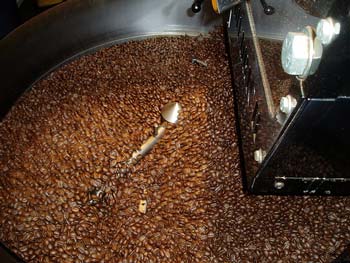Some of the best coffee projects we know of got their start on Kickstarter. From...
Why should you care about coffee processing methods? There are actually several reasons, but the most obvious one is that the processing affects the flavor of the coffee. In addition, the method used to process coffee can make it more or less sustainable and ecologically friendly. Here’s a look at how coffee beans are processed in various parts of the world, and how the different processing methods affect the flavor and sustainability of coffee farms.
Coffee beans start life as the hard pit in the center of a juicy cherry. In order to be useful as coffee, the fruit and skin must be removed from the pit, and the bean must be dried. The entire process, including drying and resting, can take several weeks. Once it’s been processed, the coffee beans are ready for roasting – though most of it will be packed into containers and shipped to a roaster in another country for that part of the process.

There are two basic methods of processing – wet and dry. Most coffee regions have a preferred method, and the preference often depends on the availability of water.
Often called “natural” processing, dry processing is the more traditional method for processing coffee. The coffee cherries are simply spread on a flat surface so the sun can dry the fruit, making it easier to remove the skin and fruit. The process seems simple enough, but it’s very labor-intensive – and many things can go wrong along the way.
The cherries must be turned regularly to prevent mold and rot and to ensure even drying. If the cherries are dried on the ground, as happens in some regions where coffee is grown and processed on small farms, they can pick up unwanted earthy or moldy flavors. Farmers avoid that by drying the coffee cherries on large tarps, cement floors, rooftops or raised tables.
Once the coffee has dried sufficiently, each coffee bean is shelled by hand. Removing the skin and fruit requires skill. The worker has to be careful to remove just enough of the sun-dried skin and fruit.
Dry-processed coffees tend to have full bodied viscosity, deep flavors and lower acidity than coffees processed with water. It’s especially common in countries like Ethiopia, where water is at a premium.
If the label says the coffee is “washed,” the coffee beans were wet-processed. In wet-processing, the coffee cherries are dumped into a vat and forced through screens with successively smaller holes, a process that removes most of the skin and fruit. They are then soaked in large vats of water for 24 hours or longer to soften so that the mucilage – the remaining inner layer of the coffee cherry – will slip off easily. The fermented beans are then dried, either in the sun or by mechanical dryers. After the beans are dry, they’re hulled by a machine or by hand to remove any remaining flesh.
Wet-processing uses a lot of water, making it undesirable in regions where there is barely enough water for human consumption. Worse, some coffee processing mills allow the water used for processing to flow back into the streams, contaminating the water supply. To combat this, many coffee farms have adopted interesting water conservation methods. They may, for example, capture the water used for processing coffee and use it to water coffee plants. This solution also serves as fertilizer for the growing tree, making coffee farming more sustainable. In addition, the soaked beans are also more prone to getting moldy, and beans dried using a mechanical dryer can dry out too much, introducing the risk of cracked coffee beans.
Wet processed coffees tend to have a cleaner, brighter flavor profile with fewer earthy notes and less body. The flavor profile tends to be more consistent, and only includes flavors that are present in the beans themselves.
Farmers in some regions are experimenting with different methods of processing. You may see terms like pulped natural, semi-washed or honey processed on the label. These coffee processing methods use a combination of wet and dry processing methods to combine the benefits of both. Generally, the coffee cherries go through the first step of wet processing, where the fruit and skin are removed. At that point, the de-pulped cherries still have a coating of sticky mucilage. Instead of fermenting, they are spread in the sun to dry.
Semi-washed coffees tend to feature intense sweetness and mild fruit flavors. They have less body than natural coffees, but are richer in mouthfeel than wet-processed coffees. Likewise, they tend to hit a midpoint between wet and dry processed coffees with regards to acidity, offering a rounded, soft, balanced acidity without the citrus bite common to wet processed coffees.
It’s not technically part of coffee processing, but a few specialty coffee roasters are experimenting with ways to further temper the flavor of coffees after processing and before roasting. One U.S. West Coast roaster sometimes offers limited run coffees that have been “aged” in wine or whiskey casks for several weeks before roasting. Because coffee is notoriously absorbent, the resulting coffees pick up a subtle but unmistakable flavor from the tannins and other chemicals absorbed by the used casks. New methods like this offer up interesting opportunities for individual roasters to distinguish themselves with unique coffee profiles much as vintners and brewers do with specialty wines and beers.
Some posts on our site may contain amazon affiliate links. We may earn affiliate commission from amazon when you purchase through those links.
Leave a Reply